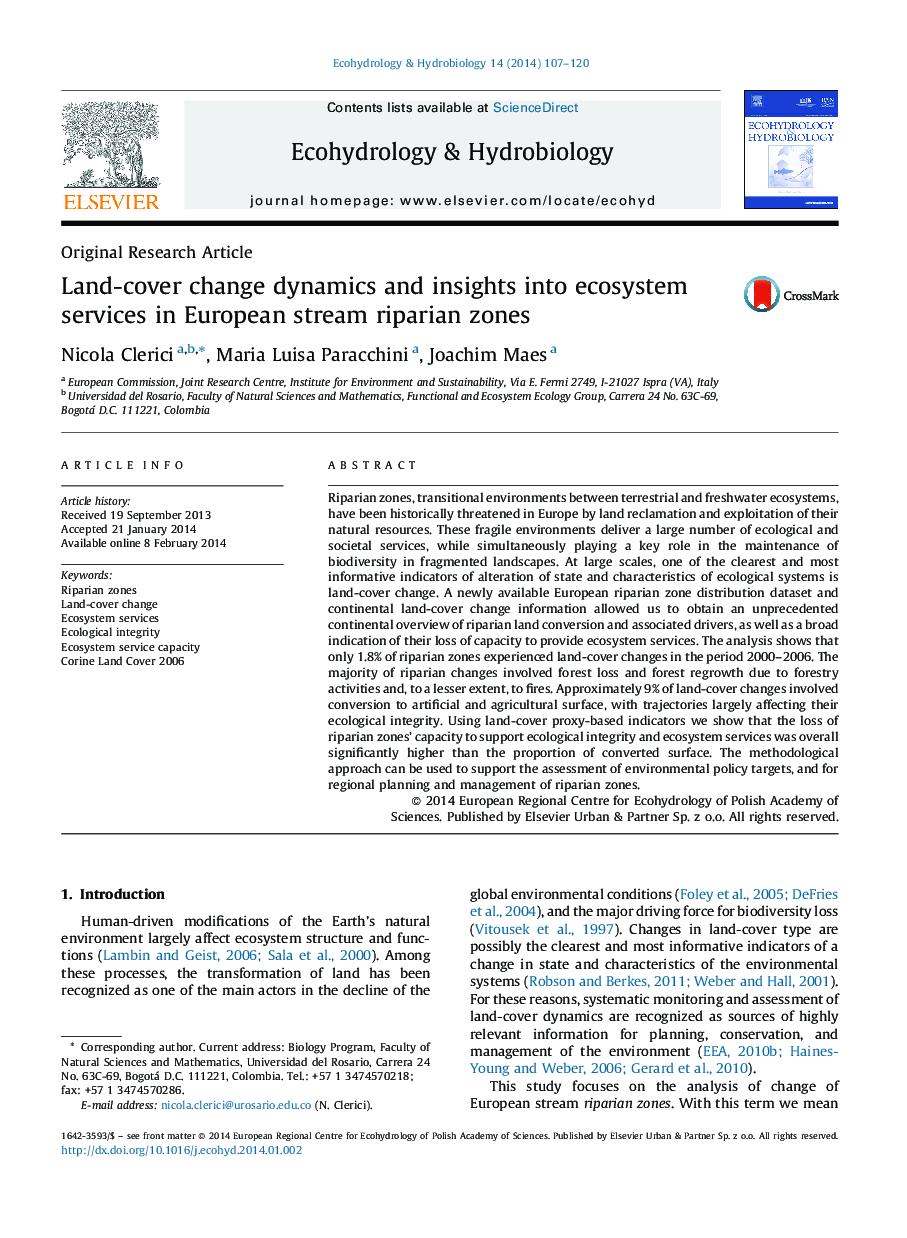| Article ID | Journal | Published Year | Pages | File Type |
|---|---|---|---|---|
| 4388152 | Ecohydrology & Hydrobiology | 2014 | 14 Pages |
Riparian zones, transitional environments between terrestrial and freshwater ecosystems, have been historically threatened in Europe by land reclamation and exploitation of their natural resources. These fragile environments deliver a large number of ecological and societal services, while simultaneously playing a key role in the maintenance of biodiversity in fragmented landscapes. At large scales, one of the clearest and most informative indicators of alteration of state and characteristics of ecological systems is land-cover change. A newly available European riparian zone distribution dataset and continental land-cover change information allowed us to obtain an unprecedented continental overview of riparian land conversion and associated drivers, as well as a broad indication of their loss of capacity to provide ecosystem services. The analysis shows that only 1.8% of riparian zones experienced land-cover changes in the period 2000–2006. The majority of riparian changes involved forest loss and forest regrowth due to forestry activities and, to a lesser extent, to fires. Approximately 9% of land-cover changes involved conversion to artificial and agricultural surface, with trajectories largely affecting their ecological integrity. Using land-cover proxy-based indicators we show that the loss of riparian zones’ capacity to support ecological integrity and ecosystem services was overall significantly higher than the proportion of converted surface. The methodological approach can be used to support the assessment of environmental policy targets, and for regional planning and management of riparian zones.
